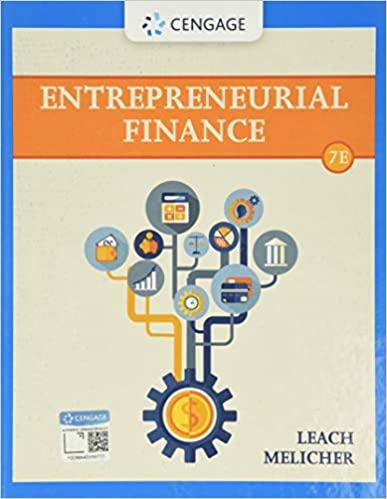Question
SELECT THE RIGHT ANSWER 1. The Corporations Act requires the following entities to prepare a financial report, except for: small proprietary companies. public companies. registered
SELECT THE RIGHT ANSWER
1. The Corporations Act requires the following entities to prepare a financial report, except for:
small proprietary companies.
public companies.
registered schemes.
large proprietary companies.
2. The two fundamental qualitative characteristics of useful information are:
materiality and relevance.
comparability and verifiability.
relevance and faithful representation.
timeliness and understandability.
3. Information is considered material if:
it has predictive value.
it includes all information necessary for faithful representation.
its omission or misstatement could influence users decision-making.
it is free from errors.
4. Some of the implications of adopting the going concern assumption are shown in the following accounting practices, except:
depreciation of non-current assets.
justification of using historical cost to measure value of assets.
inclusion of goodwill in the statement of financial position.
liquidation of an entitys operations.
5. The going concern assumption underlying the preparation of financial statements is also known as:
the continuity assumption.
the matching principle.
the prudence principle.
the historical cost measurement basis.
6. The only element in financial statements which has no independent definition under the conceptual framework is:
equity.
expenses.
liabilities.
assets.
7. Which of the following satisfies the definition of expenses?
Purchase of equipment
Payment of salaries to employees
Payment of dividends to shareholders
Cash withdrawal by owner
8. In relation to the concept of recognition of an item in the financial statements:
items of equity must satisfy both the probability and measurement criteria before they can be recognised.
for items to qualify for recognition in the financial statements as liabilities or income they must first satisfy the definition of an element, and then meet both the probability and measurement requirements in relation to recognition.
assets can only be recognised where there is a high probability of future economic benefits flowing to the entity.
expenses are recognised when a decrease in a future economic benefit related to an increase in an asset or a decrease in a liability has arisen that can be measured reliably.
9. Expenses are recognised in the statement of profit or loss and other comprehensive income when:
increase in future economic benefits related to an increase in an asset or an increase in a liability can be measured reliably.
a decrease in future economic benefits related to a decrease in an asset or an increase in a liability can be measured reliably.
a decrease in future economic benefits related to a decrease in an asset or a decrease in a liability can be measured reliably.
none of the options listed.
10. Biscuits Ltd just purchased a block of land, on which it will build a new factory for its operations. Biscuits paid $600 000 cash to the land owner. An independent evaluation reveals that the land is worth $650 000. Using historical cost as a measurement base, how should Biscuits recognise the land purchase in its financial statements?
$650 000 recognised as an asset (land).
$600 000 recognised as an asset (land) and $50 000 as a liability.
The land should not be recognised as an asset as it cannot be measured with reliability.
$600 000 recognised as an asset (land).
11. According to the Australian Accounting Standards, the following assets can be recorded initially at historical cost, except for:
motor vehicle.
equipment.
land.
inventories.
12. Australian Accounting Standards are issued by the:
AuASB.
FRC.
AASB.
FASB.
13. The concept of physical capital refers to:
the operating capability of the entitys assets.
the net assets of the entity.
the historical cost system.
the purchasing power of the dollar amount recorded as equity.
14. The capital maintenance system which modifies the historical cost of equity for inflation is the:
current value system.
general price level accounting system.
revaluation system.
cost system.
15. Badger Ltd is a company listed on the ASX, with a total number of 250 non-employee shareholders owning the companys shares and 60 employees working at the company. Which of the following statements about Badger Ltd is incorrect?
Badger Ltd is a disclosing entity.
Badger Ltd is a public company.
Badger Ltd is proprietary company.
Badger Ltd is required to prepare a financial report.
16. The body responsible for overseeing compliance with securities legislation in Australia is the:
SEC.
AASB.
IOSCO.
ASIC.
17. The following statements about the AASB are correct, except:
The AASB has power to establish committees, advisory panels, and consultative groups.
Chair of the AASB is appointed by the FRC.
The AASB has the authority to issue Australian Accounting Standards.
Members of the AASB are appointed by the FRC.
18. Members of the International Accounting Standards Board are appointed by and answerable to:
IOSCO.
the International Accounting Standards Committee Foundation.
its founders which are a group of professional accounting bodies.
representative body of national standard setters.
19. A basic premise of the IASBs in establishing standards is that:
a combination of all options depending on the sensitivity of the issue as determined by the IASC.
it should operate in full view of the public.
it should operate in full view of the IASC Foundation.
privacy and confidentiality must be maintained for all discussions of accounting issues.
20. Currently the Australian conceptual framework comprises:
the Framework for the Preparation and Presentation of Financial Statements.
the Conceptual Framework for Financial Reporting, SAC 1, and SAC 2.
the Conceptual Framework for Financial Reporting.
the Framework for the Preparation and Presentation of Financial Statements and SAC 1
Step by Step Solution
There are 3 Steps involved in it
Step: 1

Get Instant Access to Expert-Tailored Solutions
See step-by-step solutions with expert insights and AI powered tools for academic success
Step: 2

Step: 3

Ace Your Homework with AI
Get the answers you need in no time with our AI-driven, step-by-step assistance
Get Started


